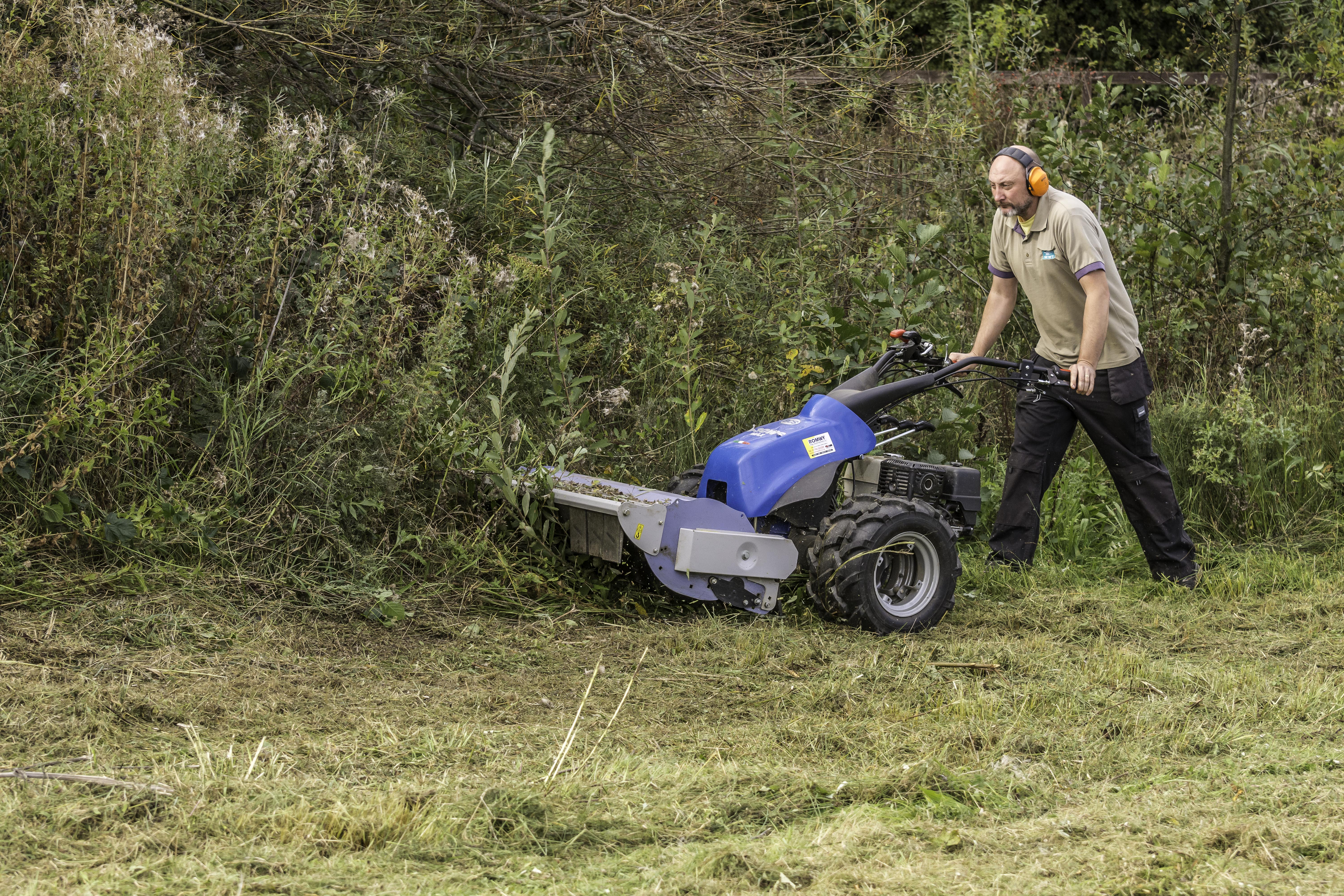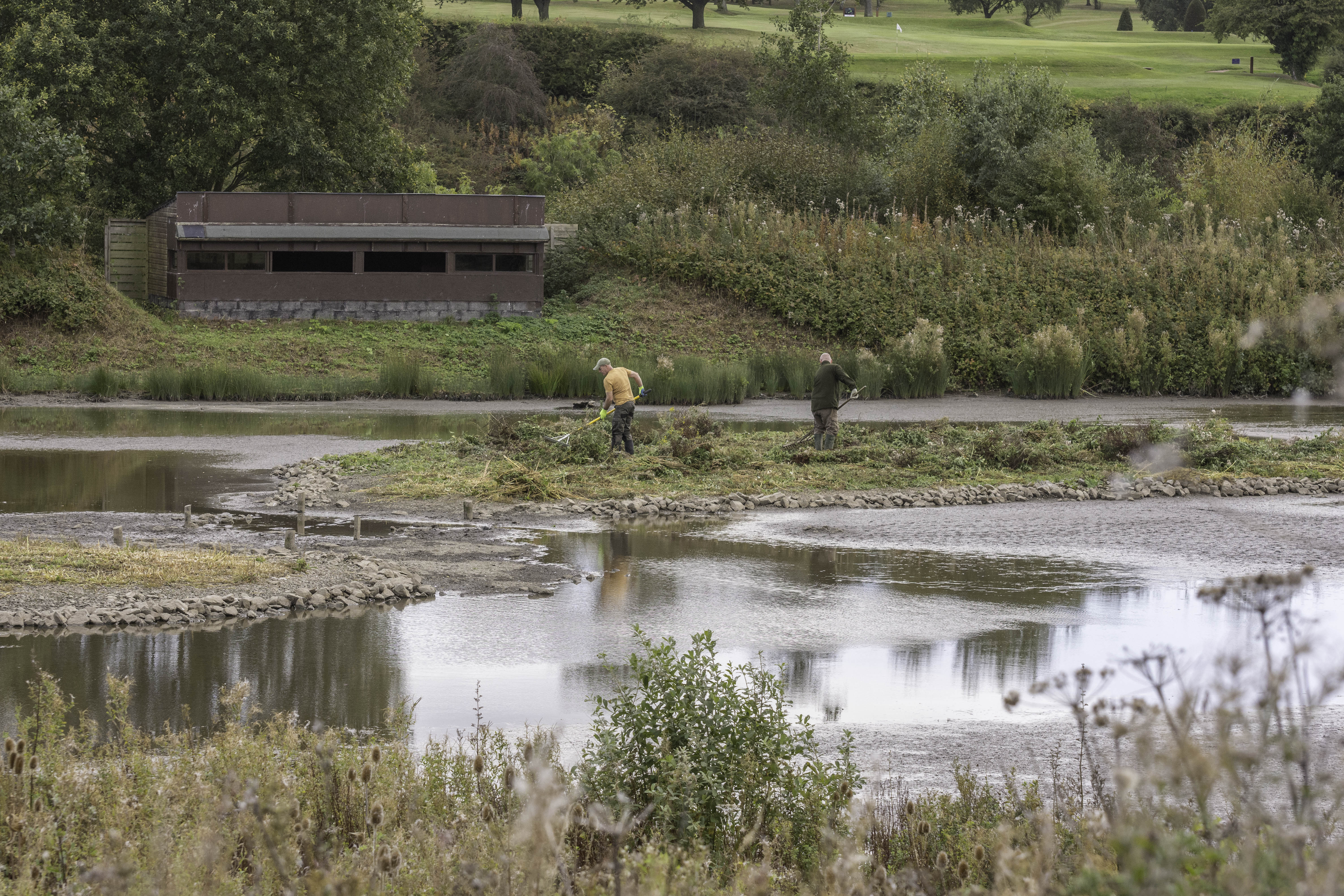Annual habitat management is a vital part of our work
 It’s the time of year when we have a small window of opportunity to undertake the management of vegetation across all 42 hectares of our site.
It’s the time of year when we have a small window of opportunity to undertake the management of vegetation across all 42 hectares of our site.
Our site is essential for wildlife throughout the year. It’s where many birds, mammals, amphibians and insects choose to breed over the summer and it's just as an important habitat for them during the other 3 seasons. This doesn’t happen by accident; we have well thought out management plans which identify what work needs doing and when in order to maintain the best habitat for this wildlife.
Late autumn and early winter is an especially important time in terms of managing the site and offers a small window of opportunity to get some major annual works done. During the optimum growth period of summer, we are very limited in the amount of vegetation management we can do. This is for several reasons:
- It is essential that we do not disturb the breeding sites of the birds and animals here. In the case of many of the species here, it is also illegal to do so. There are very good reasons for this. An animal which does not feel safe to breed here could abandon its breeding attempts or even its young which would mean it would fail in breeding that year which is obviously not what we want. It may also deter an animal from returning the following year. Our team work very hard to ensure the optimum habitat conditions for wildlife and it’s not in our interest to do anything which could negatively affect this.
- It’s important for the vegetation here that it flourishes over the summer and late summer is essential for it to drop its seeds, ensuring that it flourishes year on year. This means that we don’t cut the majority of vegetation until late August. We may cut back small areas, but we have always ensured that sufficient plant is left in order for regeneration to take place. This does, however, mean that with a site our size, there’s an awful lot of cutting, raking up and removal of vegetation to undertake once summer turns into autumn.
- Summer is our peak visitation period and we want all of our visitors to get as close to wildlife as possible. We may sometimes need to undertake some essential works but we do try to keep disruption to a minimum.
The work we will be undertaking over the next few weeks needs to be done annually to ensure that our site continues to be as great a home for wildlife as it is now for generations to come.
- We’ll be cutting back vegetation around the edges of the meadows (the main bodies of which were cut in late summer). It’s important that we do this annually as if we don’t, over time, the scrub would take over the meadows and we’d lose this brilliant habitat. The meadows would eventually become a mass of shrubs and plant species which are less helpful at providing the wildlife with the cover and food it needs to thrive.
- We’ll be strimming grassy areas across site. This removes the old growth which has done its job very well over the summer and strengthens the roots of the plant, helping it to conserve energy, ready to thrive again in the spring. We’ll also control the more dominant plants, making sure they don’t outcompete and smother the useful, less robust species too much. We won’t cut everything back though, we’ll leave some areas longer to provide cover and feeding ground for small mammals especially.
- We’ll undertake some tree work. Trees account for c11 hectares of our site so it is essential that they are well maintained. Each year an inspection of all of the trees on site is undertaken by an external tree safety company. This inspection identifies and gives guidance on a number of areas including tree condition, how safe a tree is (for visitors, staff and wildlife), whether any tree diseases are present and the general health of the tree areas on site. The results of these inspections, alongside our long term reserve management plan help us to make decisions on the tree work necessary that year. We may need to fully remove an unsafe tree, or one which has grown so large that it is preventing new trees from growing. If we do not ensure that this can happen, eventually we would be left with a site which cannot sustain its tree population and this would be bad news for biodiversity of both the trees and the wildlife which depends upon them. We may pollard or coppice some trees which have grown very large. This is essentially cutting them back as an alternative to removal. It can look very harsh at the time but will result in enabling the tree to regenerate and flourish in the coming months. We may clear a section where one type of tree has become dominant over other important species but we’ll always do this with consideration, ensuring that there are sufficient numbers of each tree to meet the needs of the site.
- In addition to the above works, we’ll be keeping up with other, smaller tasks such as getting bird boxes ready for next year, tidying up paths and other visitor access points, maintaining hides etc. It really is a busy time of year for us.
 We have quite a small window of opportunity to get all of the above done. Whilst we may not see young birds on site until early spring, the birds, especially, begin the breeding process during the winter. They’re prospecting for sites and partners and competing for breeding territories alongside all the other birds doing exactly the same thing. It’s as important that we don’t disturb them at this time as it is when they’re actually nest building, incubating, hatching and rearing young so we really do only have a few intensive weeks to get this done.
We have quite a small window of opportunity to get all of the above done. Whilst we may not see young birds on site until early spring, the birds, especially, begin the breeding process during the winter. They’re prospecting for sites and partners and competing for breeding territories alongside all the other birds doing exactly the same thing. It’s as important that we don’t disturb them at this time as it is when they’re actually nest building, incubating, hatching and rearing young so we really do only have a few intensive weeks to get this done.
We will always try our level best to keep disruption to both visitors and the wildlife here to a minimum and to keep everyone informed of any major works which may affect seeing the wildlife here.



